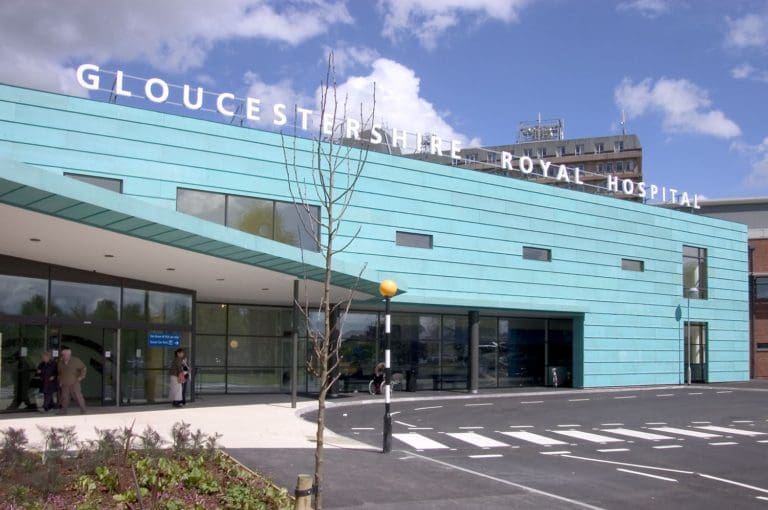
The 11-story concrete tower block building, constructed in the 1970s, dominates the skyline of Gloucester and is not only the most noticeable portion of the hospital site.
From the ground floor up to the 11th floor, Vital Energi is making extensive renovations to the external fabric and windows of the tower block. These upgrades will dramatically minimise heat loss via the building fabric and glazing units, resulting in lower energy use and carbon emissions.
Through more natural light, better ventilation, and a reduction in outside noise levels, the tower block renovation works will improve the patient and staff experience. Additionally, the two-toned façade panelling will significantly enhance the building’s appearance.
Optimising temperature across the buildings
The existing windows will be replaced with modern, contemporary tripled glazed windows throughout, and the heating systems will be improved too, which will help to optimise the temperature across the building.
Along with updates to the heating and hot water management systems that will further cut down on energy use and carbon emissions, the project also includes the installation of a 200kW air source heat pump that will supply the hospital with low carbon heat.
Development engineering manager, Rolf Hudson, plays a key role in the design and delivery of the project.
“We’re really pleased to be working on our second round of PSDS (Public Sector Decarbonisation Scheme) projects with the Trust, assisting their journey to net zero carbon by 2040 under a new long-term energy performance contract. We’ve designed an optimum solution which will significantly reduce the hospital’s carbon emissions and energy bills, as well as providing increased levels of staff and patient comfort,” said Rolf.
Significant environmental benefits
“We have an extensive track record of delivering complex infrastructure upgrades within hospital environments and are working closely with hospital staff to ensure energy services are maintained at all times, and the patient experience is not affected.”
Deborah Lee, chief executive of the trust, said: “We are absolutely thrilled at securing this additional money. This investment will not only provide significant environmental benefits but will also enhance the aesthetic appearance of the tower block and bringing with it all those softer associations such as improved morale, staff recruitment and retention and a better public perception of our hospitals.
“This investment comes on top of an existing capital programme of more than £100m which is enabling us to realise our vision for centres of excellence at our Cheltenham and Gloucester acute hospital sites. We want to provide the very best care possible with patient outcomes as good as anywhere else in the country.”
Hugely ambitious goal
Jen Cleary, head of sustainability for Gloucestershire Managed Services (GMS), which helps to manage the hospital’s estate, said the green funding would help the hospitals to make significant inroads on its carbon emissions.
“We launched our Green Plan last year with the aim of making our NHS hospitals carbon neutral by 2040 in line with national policy. That’s a hugely ambitious goal and this programme is a significant step in that journey,” she said.